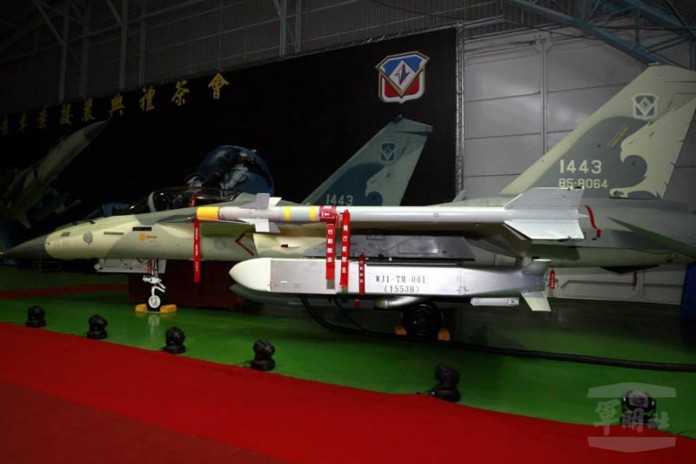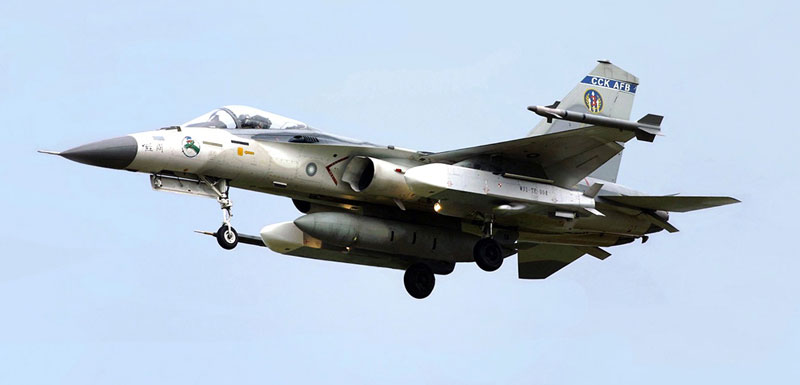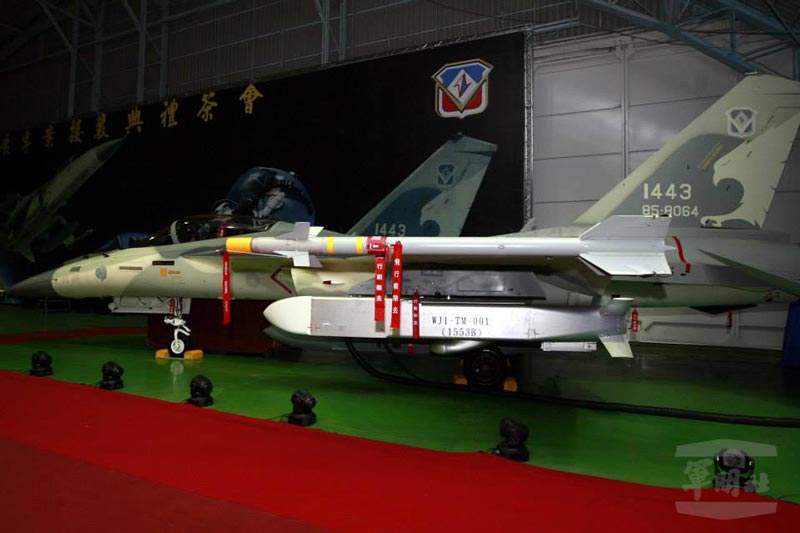
The Taiwanese Air Force unveiled an locally developed air-to-ground stand-off weapon developed for the nation’s F-CK-1 Indigenous Defense Fighter (IDF) ‘The Diplomat’ Reports. Known as the Wan Chien, or “Ten Thousands Swords,” the powered stand-off weapon was developed by the military-run Chung Shan Institute of Science and Technology (CSIST). According to news reports, Wan Chien is expected to enter production in 2015.

–
Pre production examples are reportedly supporting the Aerospace Industrial Development Corp’s IDF mid-life upgrade program. In January 2013 news reports in Taiwan claimed the Ministry of Defense was prepared to cut the number of the indigenous stand-off weapons by half, given the US agreement to provide Joint Direct Attack Munitions (JDAM) to the Republic of China Air Force. While both weapons are targeted at a predesignated coordinates, the two are inherently different in performance – JDAM is a unitary weapon with a range of up to ‘tens of kilometers’ while the stand-off weapon designed for target penetration, such as the Wan Chien is a cargo ‘bus’, capable of striking surface (area) targets at a range of 200km. The new Taiwanese weapon is more similar to the AGM-154A (JSOW) which the US is not offering to Taipei.
The new missile was unveiled during a ceremony held at Tainan Air Force Base in Southern Taiwan, marking the completion of the US$587 million mid-life upgrade (MLU) for the 71 IDFs in service with the 443rd Tactical Fighter Wing operating from this base. The program was launched in 2009 by the state-owned Aerospace Industrial Development Corporation (AIDC). Upgrades of additional 56 fighters, part of the 427th Tactical Fighter Wing in Taichung, are expected to begin in 2014, with expected completion in 2017. By then all RoCAF IDF fighters will be able to carry the new stand-off weapon.
Initiated in 2006, the Hsiang-Chan Project IDFs underwent modernization in three principal areas – upgrading the central computer from 16 bit to 32-bit platform, improved radar software and avionics. The cockpit is also improved with full color displays and head-up display (HUD). The radar system, developed by Han Shiang Corp, received a software upgrade, enabling multiple target tracking and better counter-countermeasures. The aircraft expanded its weapon carriage capability clearing four stations for air/air missiles, up from the previous two ‘Tien Chien II’ (Sky Sword) missiles and Tien Chien IIA anti-radiation missiles. Equipping the fighter with the Wan Chien standoff attack weapon will further expand the IDF’s mission in the ground attack. The box shaped weapon is believed to be a ‘cargo container’ for submunitions, such as area denial submunitions that could be used air bases, air defense and missile launching sites. Typically, such weapons are guided by a combined Global Positioning Satellite / Inertial Navigation System (PGS/INS), following preplanned flight path to reach their planned destination.
In recent years Taiwan has enhanced its capabilities to conduct standoff attacks inside mainland China. Among the weapons that have reached maturity are the Hsiung Feng IIE (HF-2E) Land Attack Cruise Missile (LACM), developed by CSIST, the submarine launched UGM-84L land and naval attack Harpoon delivered by the USA. In the F-16 modernization plan discussed with the USA, Taiwan will receive a variety of air/ground weapons, including GPS guided and laser guided bombs but its arsenal does not include standoff weapons capable of reaching China.

















